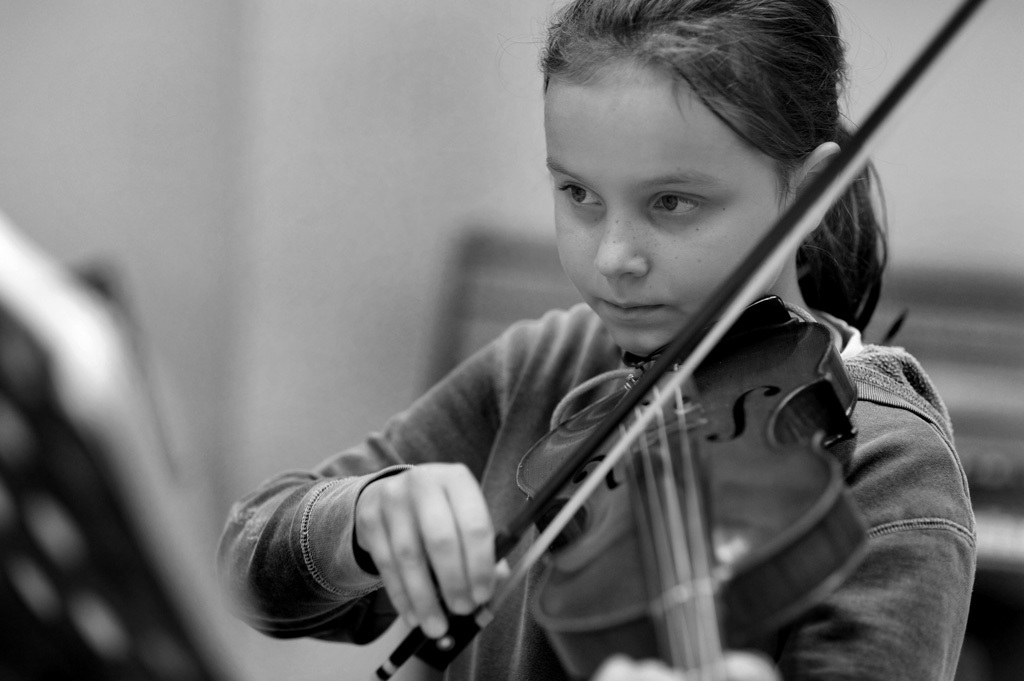
Photo: he_boden via Visualhunt / CC BY-NC
Future of In Harmony in doubt as pilot scheme draws to a close
Headteachers reject the idea of a diluted form of the music and social education programme, saying that funding will be the main barrier to schools continuing with the scheme.
Headteachers involved in the pilot of In Harmony, the national music education programme based on the Venezuelan El Sistema model, have raised concerns about the scheme’s longer term viability in the absence of further grants to support the work.
Their comments echo the findings of a 2014 report ambitions by the National Foundation for Educational Research (NFER), which warned that none of the six areas involved in the £3m three-year pilot scheme had a viable funding plan for 2015 and beyond, and that there was no clear blueprint for a future model under which the scheme could continue.
The latest evaluation of the programme, also published by the NFER, focuses specifically on headteachers’ perceptions of In Harmony. Some felt that it needed to be an ‘all or nothing’ programme, as “the intensity of provision, levels of immersion and integration of professional musicians are central to its success”.
In addition, despite expressing a strong desire to continue the programme, and some taking steps to build capacity and form partnerships to enable the work to continue, headteachers felt the programme would not achieve comparable results if it were to be “diluted”.
Their views are borne out by the experiences of one area where it was possible to make direct comparisons between the In Harmony project and a similar approach arranged with a local music provider over two years. The Headteacher responsible for both schools reported: “In essence, we provided the same thing, the same amount of curriculum time, the same overarching rehearsals and curriculum structure – but we weren’t seeing the same outcomes – musical and social outcomes. We didn’t see the magic.”
Wide-ranging impacts
The report records a wide range of outcomes from In Harmony, as observed by headteachers. The impact of orchestral music making on concentration and other learning skills is praised by some, with one Head making a link between the perseverance acquired through learning a musical instrument and an observed improvement in boys’ academic performance.
Another Head, commenting on the self-control learned by pupils during rehearsals and performances, said: “they realise that there are times when they will not be playing their instruments and that they will have to wait, quietly and respectfully, for their turn to participate.”
Other ways in which In Harmony is described as influencing pupils include:
- Attainment: improvements in National Curriculum Assessment were observed
- Social skills, participation and engagement: better social cohesion was attributed to the interdependent nature of orchestral playing
- Patience and discipline: pupils learned to accept “deferred gratification” as a result of practising and rehearsals
- Communication skills and emotional response: participants became better at understanding and articulating their feelings.
Headteachers also identified ways in which In Harmony had made a positive contribution to their schools’ relationships with parents and the wider community. In some cases parental engagement with schools grew and aspirations were raised, and some schools extended the range of positive activities they provided.
Over the years it has been operating, In Harmony has adapted to reflect the changing needs and contexts of different schools. In some cases this has led teaching away from separate instrumental, theory and ensemble teaching sessions to an integrated music teaching approach through whole class ensemble playing. It has also seen music “woven into other areas of the school curriculum” and viewed not just as a bolt-on activity. Professional musicians were seen to add value to teaching by demonstrating their musical skills, and one Head described pupils as being “star struck every time In Harmony staff came”.
Join the Discussion
You must be logged in to post a comment.